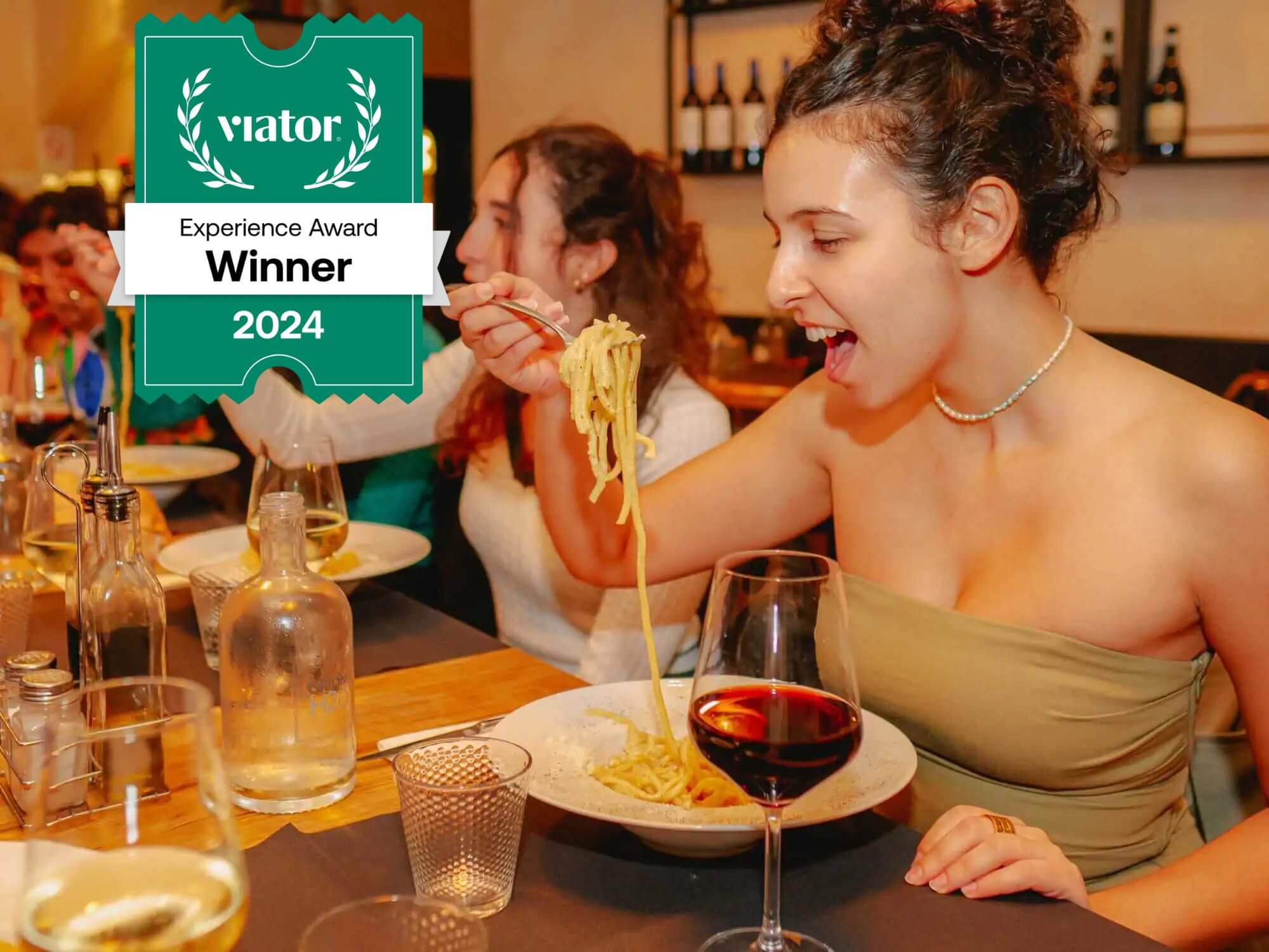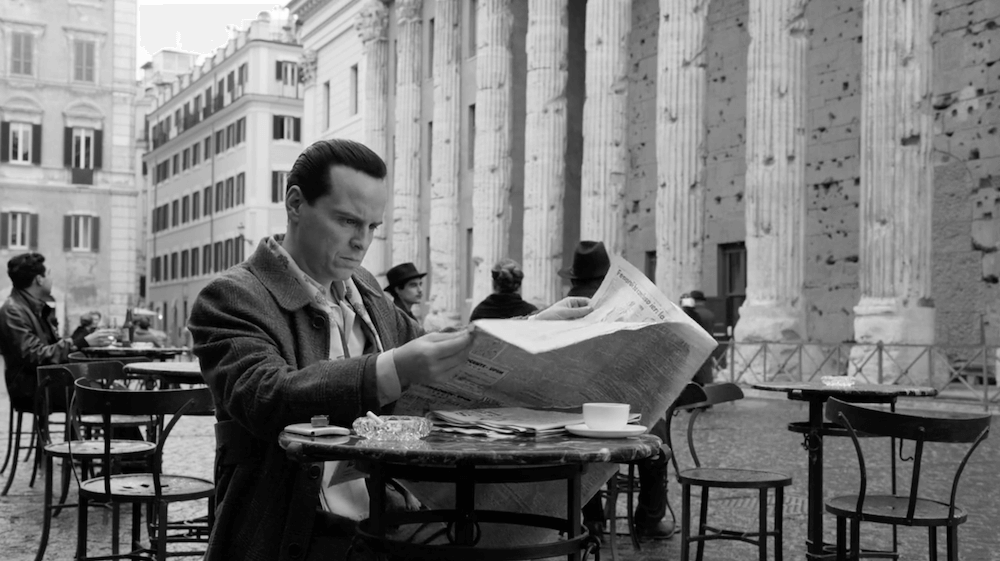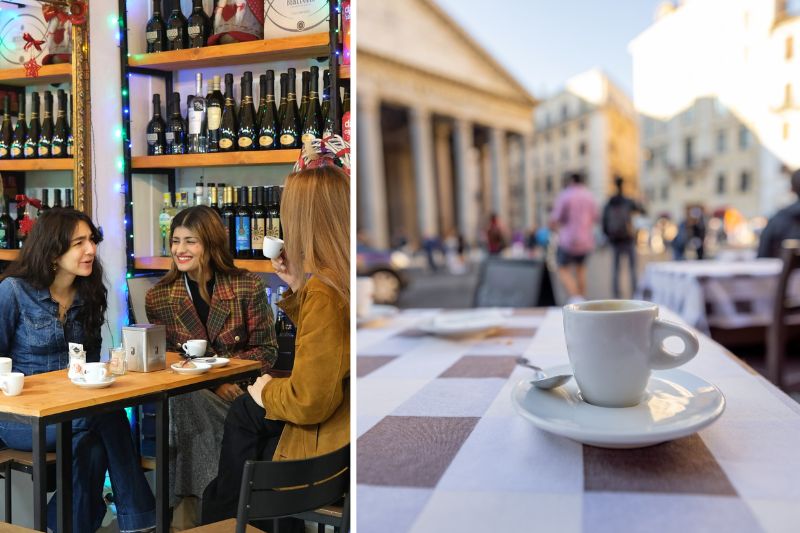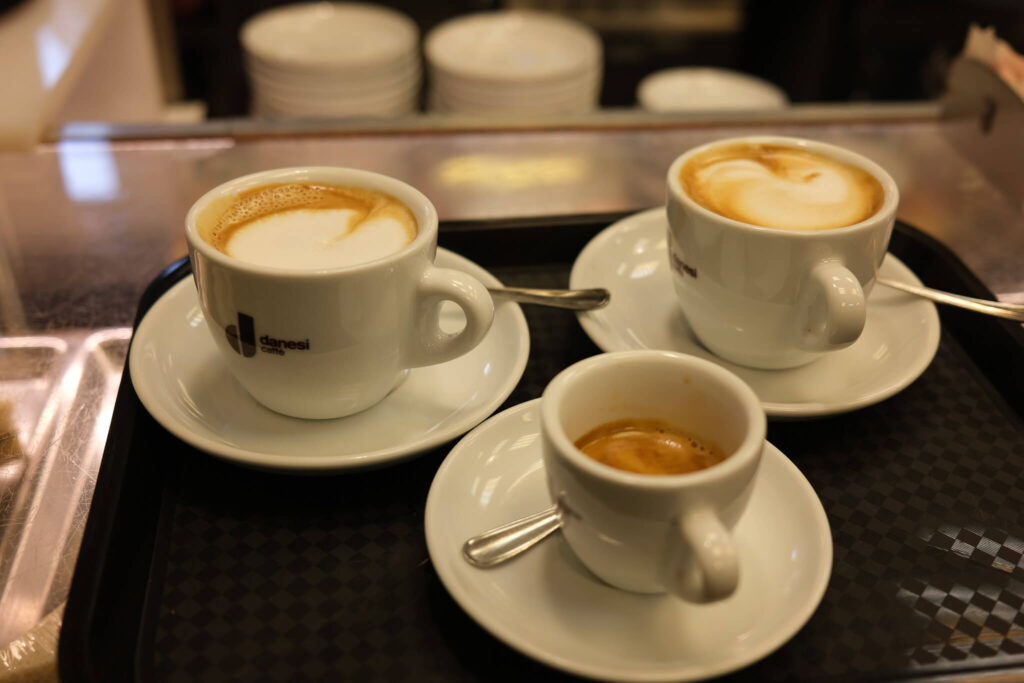
Guided TourFrom €95.00
Trastevere Rome Food Tour
One of the things we love most about Italy is its delicious, affordable coffee. In this blog, we’ll share our top recommendations for the best coffee spots in Rome and discuss the main types of coffee you’ll find in Italy.
We’ll also cover some cultural norms around ordering coffee in Italy, the types of coffee Italians drink throughout the day, and essential tips to help you avoid overpaying at the bar.
Best Coffee Shops in Rome
Sant Eustachio Il Caffe
Located just steps away from the Pantheon, Sant Eustachio Il Caffe is arguably the most famous coffee shop in Rome. Though the lines can be long and finding a table outside might be a challenge during peak season, we assure you that their creamy coffee and delectable pastries are well worth the wait.
La Casa del Caffe Tazza D’Oro
La Casa Del Caffe Tazza D’Oro, positioned near the Pantheon, offers much more than just a pretty view. This beloved spot is cherished by locals who adore the La Tazza D’Oro, or “Golden Coffee Cup.” Be sure to try a sweet maritozzo, a cream-filled bun, alongside your cappuccino for an extra treat.
Antico Caffe Greco
Founded in 1760, Antico Caffè Greco is situated near the Spanish Steps and boasts a rich history that includes famous patrons like John Keats and Lord Byron. Not only does it serve some of Rome’s finest coffee, but it also houses the world’s largest private art gallery open to the public, featuring over 300 artworks.
Gran Caffe La Caffettiera
The sophisticated Gran Caffe La Caffettiera specializes in Neapolitan coffee and pastries, including the famous rum-soaked babà and flaky ricotta-filled sfogliatelle. It recently appeared in the Netflix series Ripley, showcased as Tom Ripley’s go-to coffee shop during his stay in Rome.

A Guide to Italian Coffee
While many of us are familiar with lattes, flat whites, and mocha coffees, only one type of coffee truly stands out in Italy: the caffè. This short, strong brew is what many call an espresso (be mindful about pronunciation; saying eXpresso refers to a fast train). Most Italian coffee varieties are variations of the caffè, adjusting water, milk, or foam amounts.
Traditionally, caffè was prepared using a moka pot on the stove or made with a professional espresso machine at local cafés. Today, you’ll find most Italians opting for sophisticated espresso machines at home, often using coffee pods. There’s a multitude of ways to enjoy your coffee, and many Italians take pride in their specific preferences.

What Coffee to Order in Rome
Breakfast
Italians often kickstart their day with a milky coffee complemented by a pastry. The range of choices is vast, with options to customize your order as chiaro (light – more milk than coffee) or scuro (dark – more coffee than milk), and variations for froth, temperature, and serving style.
- Cappuccino: A blend of espresso and hot milk topped with foam in a cup, often dusted with chocolate.
- Caffe latte: A combination of espresso and hot milk, typically served in a glass (don’t forget the caffè part unless you want just milk!).
- Latte macchiato: Hot milk “stained” with a shot of coffee served in a glass.
Lunch and Beyond
Milky coffees are generally reserved for breakfast in Italy. After 11 a.m., ordering them can be seen as peculiar, much like drinking a warm bedtime drink at lunchtime. This is why Italians may be confused, even offended, when tourists order a cappuccino with their pizza or pasta.
Once breakfast is over, people typically switch to a standard shot of coffee – a caffè or perhaps a small white coffee, known as caffè macchiato (which is espresso “stained” with milk froth or foam).
A quick pick-me-up can be enjoyed anytime, but many seasoned coffee drinkers opt for a corrected coffee, the caffè corretto, which is often enhanced with a splash of grappa, sambuca, or other spirits for an extra buzz. Alternatively, you could enjoy a sweeter version corrected with Baileys.
How to Order Coffee in Rome
When ordering coffee, be aware of the two pricing systems in Italy. Most Romans enjoy their espresso standing at the bar, where prices range from 80 cents to €1, while a cappuccino typically costs between €1.20 and €1.50. Keep an eye out for the cash register: you should pay first and take your receipt (scontrino) to the bar to place your order.
Although you’re on holiday, remember that a €1.50 cappuccino might cost you €5 if you sit down, especially at a café with a view. Seating incurs an additional fee since waitstaff must serve you. Think of it as paying for the scenic view, and once you pay, feel free to relax with your coffee for as long as you wish.

The Caffè Americano
The Americano, created during WWII, is essentially a caffè diluted with hot water. This coffee was tailored for American GIs in Italy who desired a longer drink. Note that no French presses or cafetières are found here; an Americano is simply an espresso with added hot water. If you prefer it with milk, just ask for it con latte.
Fun fact: Italians are quite unimpressed with this drink and humorously label it ‘dirty water’.
Explore Rome through Taste with Carpe Diem
Are you visiting Rome but unsure where to enjoy a delicious meal?
While you could rely on TripAdvisor reviews or seek recommendations from your hotel, how can you be certain you’ll experience the genuine local cuisine rather than just following the popular choices?
Join us for our Trastevere Food Tour, where we guide you to hidden gems that locals cherish.
Our tours emphasize small family-run businesses that prioritize locally sourced and ethically produced ingredients. They support sustainability through our partnership with Ecologi and feature friendly local guides who not only adore Italian cuisine but also truly understand it, sharing insights and stories about your favorite authentic dishes.
But don’t just take our word for it—come and taste for yourself!

Alexander Meddings is a professional copywriter with a postgraduate degree in Roman history from the University of Oxford. After earning his MPhil, he moved to Florence and later to Rome to conduct his research and follow his passion at the source. Today, Alexander works in travel as a writer and content consultant and also teaches at a university while providing translation services.





